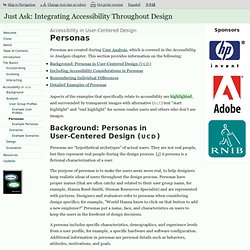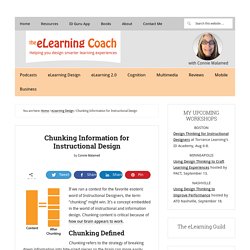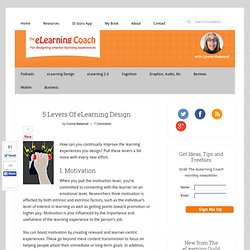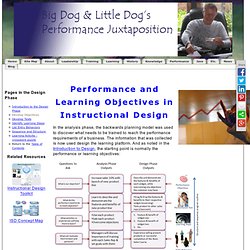

Why Online Courses [Really] Need an Instructional Design Strategy. In this post I examine and define instructional design, and share why it’s essential to the development of online courses.
![Why Online Courses [Really] Need an Instructional Design Strategy](http://cdn.pearltrees.com/s/pic/th/instructional-strategy-57124576)
“Design brings forth what would not come naturally“ Klaus Krippendorff Developing an online course that is engaging, promotes interaction, motivates learners, and above all facilitates learning is easier said than done. It’s even more challenging when trying to modify a face-to-face course for the online format. I know because I worked at a four-year college as lead curriculum designer. My job was to collaborate with faculty to transition their face-to-face courses to a 100% online course which was delivered via the schools’ learning management platform, Moodle. The Design Process for Online Courses, by Giulia Forsythe (Flickr) I have over ten years experience as an instructional designer, which includes creating management development courses and employee training programs. What is Instructional Design? Why Instructional Design? I. II. III. Resources Like this: Ebook_engagementtips2013. Technology to Promote Thinking.
Just Ask: Integrating Accessibility Throughout Design. Personas are created during User Analysis, which is covered in the Accessibility in Analysis chapter.

This section provides information on the following: Aspects of the examples that specifically relate to accessibility are highlighted, and surrounded by transparent images with alternative (ALT) text "start highlight" and "end highlight" for screen reader users and others who don't see images. Background: Personas in User-Centered Design (UCD) Personas are hypothetical archetypes of actual users. They are not real people, but they represent real people during the design process. [1] A persona is a fictional characterization of a user. The purpose of personas is to make the users seem more real, to help designers keep realistic ideas of users throughout the design process.
A persona includes specific characteristics, demographics, and experience levels from a user profile, for example, a specific hardware and software configuration. Hanna is moving up the corporate ladder. References. Chunking Information for Instructional Design. If we ran a contest for the favorite esoteric word of Instructional Designers, the term “chunking” might win.

It’s a concept embedded in the world of instructional and information design. Chunking content is critical because of how our brain appears to work. Chunking Defined Chunking refers to the strategy of breaking down information into bite-sized pieces so the brain can more easily digest new information. The reason the brain needs this assistance is because working memory, which is where we manipulate information, holds a limited amount of information at one time. Why We Chunk Content George A. The pearl of wisdom here is that if a learner’s working memory is full, the excess information will just drop out—as in disappear. 5 Levers Of eLearning Design. Sharebar How can you continually improve the learning experiences you design?

Pull these levers a bit more with every new effort. 1. Motivation When you pull the motivation lever, you’re committed to connecting with the learner on an emotional level. You can boost motivation by creating relevant and learner-centric experiences. 2. Brain dumps are out. OULDI - Learning Design Toolbox. Performance & Learning Objectives. In the analysis phase, the backwards planning model was used to discover what needs to be trained to reach the performance requirements of a business.

The information that was collected is now used design the learning platform. And as noted in the Introduction to Design, the starting point is normally the performance or learning objectives: Learning and performance objectives are created so that we know exactly what the learners must be able to do once they have completed the training process. Of all the activities within the ISD process, this is normally considered one of the more critical steps in that well constructed learning objectives that align with the business unit's requirements allow: The instructors to know what needs to be taught The learners know what they are supposed to learn The managers know what they are investing their training dollars in. A Terminal or Performance Objective is developed for each of the tasks selected in the learning program.
Observable Action (task) Home - LAMS Documents (English) Home - LAMS 2.
Beyond Distance Research Alliance at Leicester. Instructional Design & Interface Design. Four Component Instructional Design (4C/ID) The Four-Component Instructional Design model (4C/ID-model; van Merriënboer, 1997; van Merrienboer, Clark, & de Croock, 2002) is an instructional design model typically used for designing and developing substantial learning and/or training programs ranging in length from several weeks to several years and/or that entail a substantial part of a curriculum for the development of competencies or complex skills.

Its basic assumption is that blueprints for complex learning can always be described by four basic components, namely learning tasks, supportive information, procedural information, and part-task practice: Learning task is used here generically to include case studies, projects, problems and so forth. They are authentic whole-task experiences based on real-life tasks that aim at the integration of skills, knowledge, and attitudes.
Carpe Diem: give us two days of your time and get your course online. Ideo Design Thinking for Educators Toolkit. Oldsmooc.